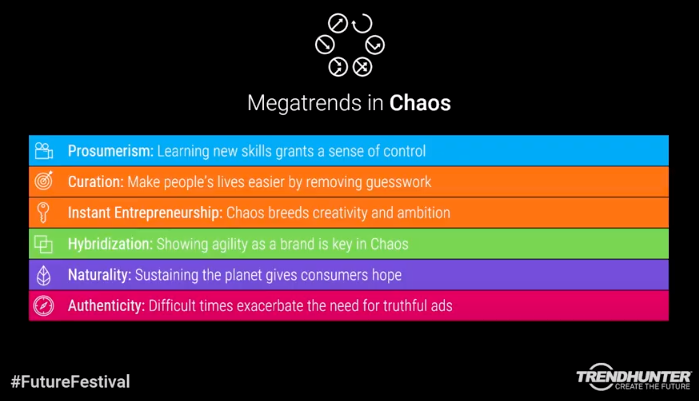Environmental Graphic Design After COVID-19: Leveraging EGD to create engaging experiences
As the world continues to adapt and change, we seek to understand what some of the more unseen impacts may be. Graphic design is incorporated into every aspect of our lives in ways we aren’t always consciously aware of. It will influence our environments post-pandemic by focusing on ways to communicate new rules and processes, providing clarity on expectations, establishing a sense of community, and creating continuity for the future.
COVID-19 Temporary Testing Facilities
The COVID-19 pandemic has ushered in a new urgency to quickly set up and adapt both public and private space for temporary testing facilities (TTFs). To help our clients, communities, and nation minimize ongoing pandemic impacts, we have developed a set of best practices and insights to safely and efficiently establish a TTF.
Retail After Covid-19: A New Connected Economy
Robyn Novak of NELSON Worldwide shares insight on the new, Connected Economy. One that places more value in meaningful experiences with a focus on authentic human connection, supported by revolutionary new technology that allows consumers greater access than ever before.
Office Insight: From Farmhouse to City Life / Utility Company Corix
Corix, a utilities company delivering solutions for sustainable water, wastewater, and energy infrastructure tapped NELSON Worldwide to create a new home for them, right in the heart of the Windy City. Read more here.
Fish & Richardson
Work after COVID-19: Defining The New Human Connection
I love a face-to-face meeting. I process information more holistically in these settings – body language, verbal cues, visible reactions in the room. While NELSON works from home during the COVID crisis, Zoom and Skype have been indispensable in filling the face-to-face void between colleagues.
Our digital era has given rise to the concept of being “alone together” – solitary but connected. Right now, millions of us are “home together” and looking for ways to maintain the genuine human connections that keep a workplace humming.
In lieu of water cooler chats, we share images of our homes, our pets, our families, and our unique or quirky work settings. We schedule virtual happy hours. We check in more often.
Being “home together” has reinforced the need for authentic, human-to-human connection at work. Trust, empathy, and communication between people form the foundation of the most successful teams.
As we rely on WiFi and video chat to keep our social ties alive, I think workers may return to office environments in a post-crisis era with a different attitude – an even greater desire for meaningful connections, and a new appreciation for the physical space that enables them.
How will our Zoom-connected virtual offices influence the “IRL” workspaces we return to?

Bringing the Home-self to Work
Working from our kitchen tables in slippers, we’re entering a new era of “business casual.” It’s allowed us to mix the workplace and the home space and relate to our colleagues on a more relaxed level. We can bring this sense of authenticity to the physical workplace too. Elements like employee walls located in central gathering areas allow people to share photos and items from their personal lives, capturing the same new closeness and informality we are experiencing in Zoom life.
Flexible Workspace
Working from home can offer more flexibility in setting – we are fully free to change rooms or positions throughout the day. Offices should have the same flexibility. Following the principles of the activity-based workplace, creating a variety of settings at work to support mobility and choice can foster the same sense of freedom as home.
Meeting Spaces and Video Rooms
Change your Zoom background yet? The ability to use a branded background is a useful tool for representing your company to clients or other partners. We can translate this to the physical space by branding smaller video-enabled rooms in the office.
Loosen up densification
With more space to spread out at home, expanding the typical desk surface in the office may be in order. Is having a bigger desk counterintuitive to connection? Not at all. Aside from the hygienic benefits of increasing social distance for everyday tasks, it allows more individual space for changing use throughout the day, from heads-down work to spontaneous meetings with colleagues.
It’s heartening to see human connections flourish despite physical distance. If we embrace the tools and techniques we’re adapting now for the digital realm, we can use them to enrich our offices once we return.
It’s Not Cake – What it Really Takes to Get People Back to the Office
“What will bring employees back to the office?” is one of the most common questions we as architects and designers are asked on a daily basis. While there is no one-size-fits-all secret recipe when it comes to designing the best back-to-office experience, there is one thing that definitely won’t have employees crawling back to the workplace…
During a meeting with a client about the importance of listening to employees, the value of acknowledging their concerns, and involving them in deciding when to make changes, I was shocked when the CEO commented, “I don’t get it, no one came to the office today, and we ordered cake.”
The response sparked a greater question and conversation: What’s the magic “thing” that will bring life back into our office spaces? What will convince people to commute two hours, pay for childcare and wait until Sunday to do the laundry? That CEO isn’t alone in their thinking: When employees were in the office five days a week, having free food was considered a perk. They were already there and only had to get up and walk to the café to grab a slice of cake, pizza, etc. It was a nice break in your day, a chance to chat with your colleagues. However, things have changed, and we need to adjust our expectations on what the true draw is. Hint: It’s not cake.
We’ve known the answer for years: the only thing your office space has, that nowhere else does, is your people. When employees were surveyed in the wake of the pandemic, the number one thing they all said they missed about the office was the people. Even science tells us we need in-person interaction. Studies have shown that in-person interaction helps drop blood pressure and reduce anxiety. The elderly live longer and more fulfilled lives when they have regular interactions with others. Blue Zone studies, which explore regions of the world where people live significantly longer and healthier lives, are showing us how important a connection to our community is to our longevity. So, if we know that we miss each other and that being around others will improve our lives, why isn’t that enough to get people together in offices?
It’s going to take work both from employers and employees to implement the changes required. Let’s dive into what we can do to promote and support in-office work by focusing on three necessary steps to build and sustain in-office culture in a flexible work environment:
The First Step: Listen
This seems simple but it’s more nuanced than you may think. You need to have a deep understanding of not just the organization, but the specific office culture and local teammates. Engaging the end users to understand, when they do come in, what it is that is bringing them in. What tasks and activities are they completing? This understanding helps your team identify the tasks that bring them in, ensuring you support them in both policy and physical space. In turn, this approach demonstrates that you’re listening and encourages continued engagement.
The Second Step: Create Rituals
Rituals have been proven to help build social networks, psychological safety, performance and purpose by giving people a sense of ownership and empowerment. Humans find comfort in predictability. Take a common ritual like going to the gym as an example: Once it becomes embedded in your routine, it becomes something you count on, you look forward to it, you see and interact with the same people, you build personal relationships, you feel part of something bigger than you and you miss it when you don’t go.
Rituals don’t need to be complicated. They can be as simple as a 15-minute stand up discussion to talk about your weekend plans. They can be as involved as an all office outing. The key is they need to happen regularly and at a consistent day and time that people can begin to count on.
The Third Step: Build Place Attachment
If you build reliability through listening and creating rituals, you will inevitably begin to foster place attachment. Place attachment is the emotional link formed by an individual to a setting that has been given meaning through interaction. Building workplace attachment has been shown to improve job satisfaction, performance, organizational commitment, employee retention, and office culture. Things that any company would be interested in.
There is no slice of cake or magic pill that is going to solve all our workplace woes. It’s going to take effort, patience and determination by both employers and employees. Some companies find it easiest to begin deploying these ideas at the same time as an office renovation, when teammates are already primed for change. However, these are all things that can be implemented at any time in any company for little to no capital.
Color Factory
Back in 2017 one of my favorite blogs, Oh Happy Day, announced a new project called ‘Color Factory’. It was described as a ’12,000 square feet of color experiences’, a collaboration between their favorite artists, designers & chefs to celebrate color, design, and their hometown of San Francisco. All the bright colors and fun looked amazing, but it was also on the other side of the country. THEN, this summer, Color Factory brought their hugely successful exhibit to New York, so during BDNY week, we were able to get tickets and experience the fun firsthand!
To begin, we entered the ‘lobby’ greeted by a physical manifestation of their colorful, New York-centric website, a display of colors and poems inspired by the streets of New York, and most importantly, mochi ice cream. The space became a holding area where you can hand in your tickets and check your coats before you enter the exhibit. It was explained that we would enter through a series of rooms that let you experience color differently, sometimes there would be an activity, sometimes a food pairing, sometimes selfie stations and sometimes all three. One of the most clever things they did was hand out cards with a QR code that we could scan at different stations which would take a picture of us and send it directly to our email, so we could be hands free!
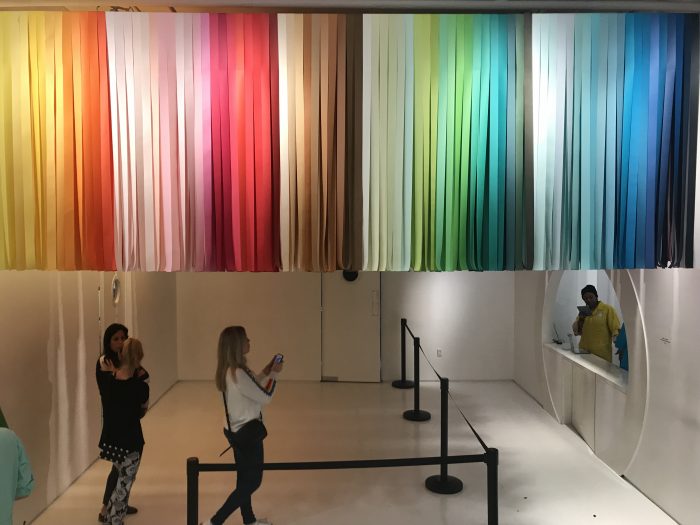
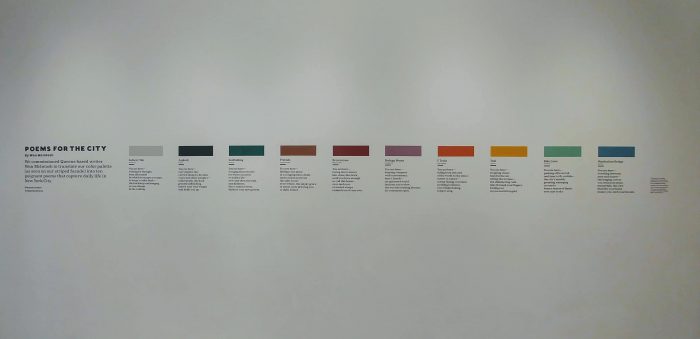
The first room was full of colorful pins, and each person got to pick which color spoke to them (I picked ‘Jet’ which looked to me like an inky blue/purple, but was really just black). As we traveled through the exhibit, we did some activities that made us feel exposed (like staring at your coworker intently, while sketching them without looking at the paper or picking up your pencil), some were a little less exciting than others (like playing plunking on a two note xylophone), some were sponsored by big brands (like the dance party sponsored by Maybelline) and almost all of them had a food pairing (the best one was the blue ice cream from the blue ball pit room).
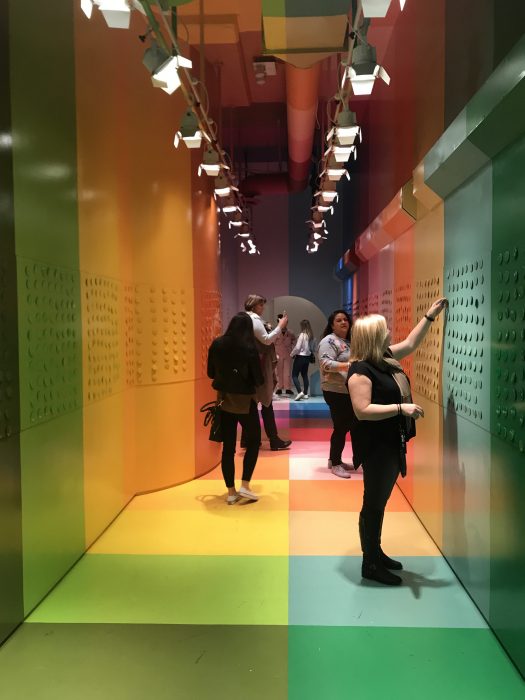

But, I think my favorite rooms focused on the origin of colors and the translation of an experience through color. There was a room about midway through that showed colors named A-Z; each color was mounted on a drawer slide – one side named the color and the other explained its origin. As a designer that digs through color every day; understanding the origin brought more meaning to the palettes we select. Another room translated a palette entitled ‘Thoughts on a Subway on 7/30/2018’, below were listed the ‘thoughts’ and their translating colors gradating from a sunny yellow to a deep midnight blue. The artist then made this observation and palette into a merry-go-round bringing the colors to life (and creating a platform for a cool Boomerang).
The price tag for a ticket is steep ($38/person), but you got a lot of bang for your buck with take-aways, activities & food pairings. If I had any critique, it would be that the rooms sometimes felt disconnected (most likely because of the wide variety of artists they included), sometimes it felt like the procession had meaning and connected to the room before, and sometimes the rooms seemed to stand alone. I almost expected the path to build up to a final New York – centric experience or reveal. The last room featured a GIANT blue ball pit, which was VERY cool, but didn’t seem to speak to the color story inspired by New York. That said, I really did love every minute of this exhibit, surrounded by color, inspiration and artistry, it was hard for me to find something I didn’t enjoy. We spoke with some of the guides along the way, and it sounds like they’re still discussing how long this exhibit will be in place (the one in San Francisco lasted about 8 month), but if you’re in New York and you love color (and who doesn’t?) – this is a must see.
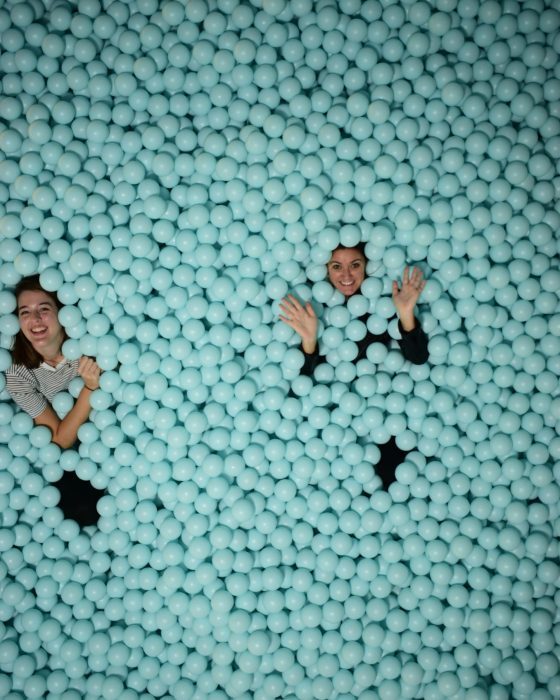
Embracing Chaos: Key Takeaways from Trend Hunter’s 2020 Future Festival
We attended Trend Hunters’s 2020 Future Festival one of the world’s most innovative conferences, to better understand the trends that will define the future as we navigate the most critical period of change in modern history. A common theme at this year’s event focused on chaos and how it is driving innovation across all sectors.
Gathering virtually alongside nearly 12,000 other professionals, we listened and joined conversations that opened our eyes and ears to big ideas and opportunities on the horizon. Here’s what we took away from this year’s events:
A New Hierarchy of Needs
Now more than ever, brands have an opportunity to get creative with their strategies and offerings as consumers, in one way or another, become more open-minded to new opportunities. With so much uncertainty and change, the traditional hierarchy of needs has shifted and many people have been left to question what exactly they do “need” to be fulfilled. For most, the focus has shifted to things like food, safety, and shelter, all things that didn’t previously occupy the forefront of our minds. For retailers, employers, and beyond this presents a rare opportunity. The opportunity to offer something new and pave the way for consumers of today and the future.
The 2021 Rush
While this year felt like a free fall, 2021 will feel like a gold rush. With a vaccine and a new year on the horizon, there will be endless opportunities to gain new footholds with customers while embracing new verticals. With this in mind, brands, businesses, and organizations of all shapes and sizes should be ready to innovate, grow, and meet consumers’ needs by filling in gaps that have appeared this year. For example, urban real estate prices are lower than ever before, so brands looking for city spaces should take advantage.
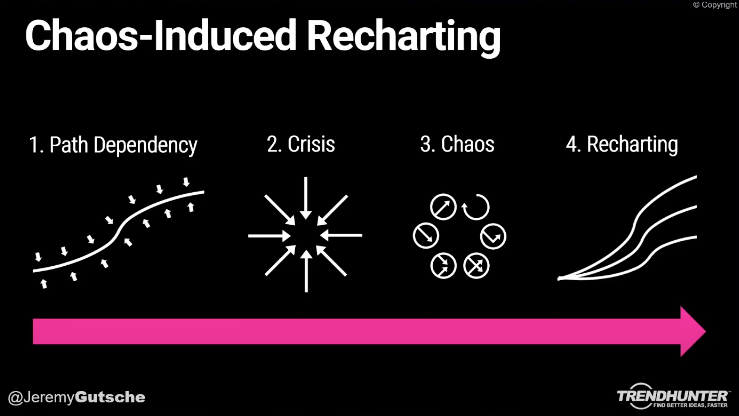
Brand Opportunity
In addition to learning about the latest consumer and real estate trends, more key takeaways and megatrends from this year’s Future Festival were a detailed reminder to take advantage of new opportunities:
- Acceleration: While focusing on how to navigate pandemic impacts, many brands have accelerated previous initiatives. AI is one area where brands have seen years of progress unfold in a matter of months to adapt.
- Cyclicality: With health and wellness in mind, cyclical/sustainable solutions have become a top priority for most brands as they think about the future and how to be prepared for it.
- Convergence: More than ever, hybridization and cross-market innovations are helping brands in new ways while seemingly disparate businesses are coming together to create new opportunities for consumers. Check out our (Re)dustrial Revolution webinar to learn about how retail and industrial sectors have merged.
- Divergence: With a new sense of community, consumers have divided their attention to also smaller entrepreneurs and local businesses to support and invest in microcosm.
- Redirection: Experience was already a powerful driver of change, and as it evolves, pent-up demand for experiences (revenge against COVID) will make it an even bigger investment as consumer seek out things that make them FEEL something.
- Reduction: Today, simplicity has become popular as consumers look for products, services, and environments that offer a sense of calm. Moving into 2021, people will redefine essentialism as they carry the things they discoverd in 2020 into the new year.
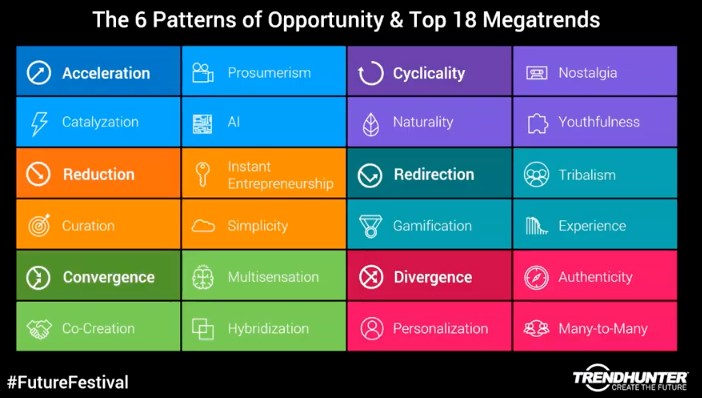
Overall, as consumers adapt to new lifestyles and anticipate post-pandemic freedoms, preferences are changing by the minute and if brands are brave and bold enough to embrace the chaos, it is possible to thrive. We’re both curious and excited to see what trends will emerge and be explored at next year’s festival. To learn more about Trend Hunter, visit here.
Healthcare after COVID-19: Smart design solutions for clinical spaces
This pandemic is unlike anything we’ve seen before and has forced architects and designers to take a more critical eye to our projects in every industry, especially healthcare. The sad realization is, history repeats itself, but this is our chance to evaluate and make changes today that will have a significant impact in the future.
So how can we help?
According to U.S. Army researchers, harsh cleaners must be used every two hours to keep hospital surfaces free of bacteria such as MRSA and VRE. For many facilities, this frequency of environmental services is just improbable. Therefore, the critical decisions that go into interior solutions for hospitals must offer opportunities to minimize the effects of contagions. When selecting materials and fixtures, healthcare interior designers have the responsibility to uphold the most stringent infection control standards.
Here are a few smart and healthy interior design solutions for clinical spaces:
- Paint Shield/Registered Anti-Microbial Paint kills 99.9 percent of Staph, MRSA, E. coli, VRE, and Enterobacter aerogenes within two hours of exposure on painted surfaces and continues fighting for up to four years post application.
- Copper fixtures and copper-infused mesh or upholstery on furniture mitigates bacterial and viral transmissions, while copper-filled composite hard surfaces and linens have proven to reduce the number of hospital acquired infections.
- Silver Ion Technology is integrated into many coatings, polymers, and textiles at the molecular level of the product and not susceptible to wash-offs. This antimicrobial technology can be specified for common hospital fixtures including light switches, door handles, water tanks, bed rails, storage containers, bedding, gowns, cubicle curtains and carpet.
- Lighting Fixtures with Disinfection Technology should be used in high-acuity spaces. Fixture current’s disinfection capabilities are safe for human use and kill up to 99.7 percent of common surface pathogens over an eight-hour period.
- The Three I’s: Integral, Impervious, Impermeable. Seal nooks and crannies to eliminate hard-to-reach contaminants in patient areas and specify integral sinks and wall bases. Mitigate the opportunities for surface-borne pathogens with impervious hard counter surfaces. And improve cleanability with impermeable upholstery on patient and family seating.
As we enter the post-COVID-19 world, it is clear that we must harmonize design with infection control standards. These are a few easy-to-implement strategies that can be used in a wide array of solutions without ever compromising patient safety or design.
